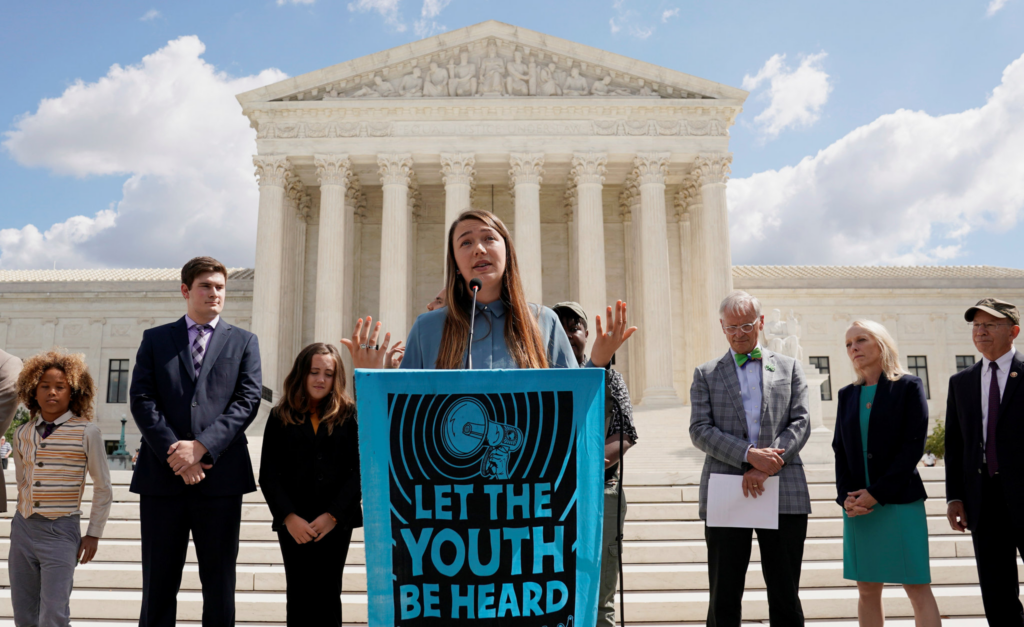
By Hunter Marion.
In 2015, a group of 21 young people ranging from 8-19 in age filed a lawsuit against the federal government for violating their rights to a safe climate as argued under the “public trust doctrine.” This collection of plaintiffs was represented by the environmental legal firm, Our Children’s Trust, and contained several activists from the youth-focused environmental group, Earth Guardians. Juliana v. the United States became a high-profile, youth-led, legal battle to correct the political mess that contributed to roughly 50-years’ worth of climate change (several of the young plaintiffs even cited it as directly damaging their ways of life).
Although promising, the case was kicked around the court system, eventually getting stuck in legal limbo with the U.S. Supreme Court currently debating on whether to accept it for oral argument. If accepted, this case (and others) could potentially lay the groundwork for novel legal actions to prosecute against entities that contributed to climate change. It could also lead to more thorough punishment of gas and oil companies, set precedent for other environmental lawsuits, and possibly guarantee a constant right to a clean and stable environment.
Some legal scholars have criticized that the points brought up in Juliana were too weak, had too many sources of damage, or could not be given proper resolution within the judicial context. However, many judges involved in reviewing the case pointed out considerable evidence to the contrary. Critics also protest that even if the U.S. Supreme Court were to accept the case, it would not have the power to enact these changes because it is not the rule-making body of government. But this criticism also falls flat when one recognizes that the U.S. Supreme Court has a record of judicial activism or “legislating from the bench” (creating or interpreting their own new laws or constitutional rights without the need for the legislature to create them first), see Brown v. Board of Education (1954), Roe v. Wade (1973), or Citizens United v. Federal Election Commission (2010). To put it bluntly, the courts can find the necessary points, damages, and resolutions if they want to.
The key takeaway from Juliana vs. United States is that for those seeking environmental justice, the courts are not a guaranteed pathway to restitution. Even if you or your group brings solid, compelling evidence or has a resounding reputation, that may not be enough to overcome the federal government’s reluctance to address its responsibility (or even culpability) in environmental degradation, climate driven or otherwise. While this approach creates another pressure point on those responsible for climate change, we at CHEJ would put more faith in a grassroots-based, multi-government level-focused strategy that gives us a seat at the table rather than relying upon a team of lawyers and government officials to do it for us.
If you would like to learn more about the case, you can watch the documentary Youth v. Gov now available on Netflix.
